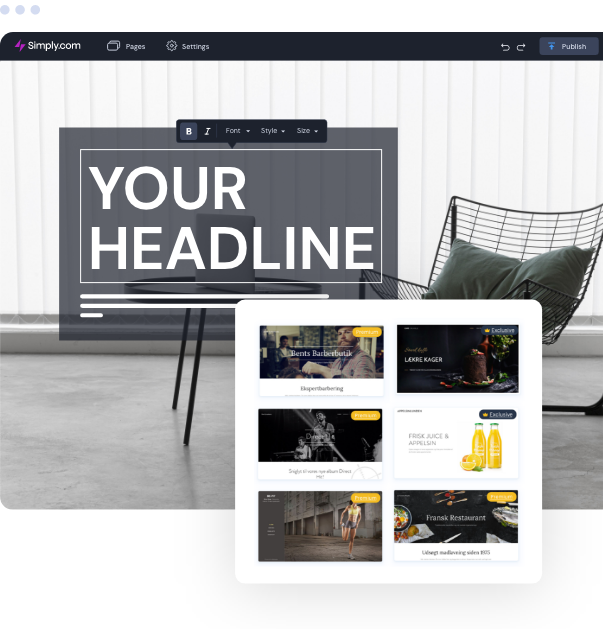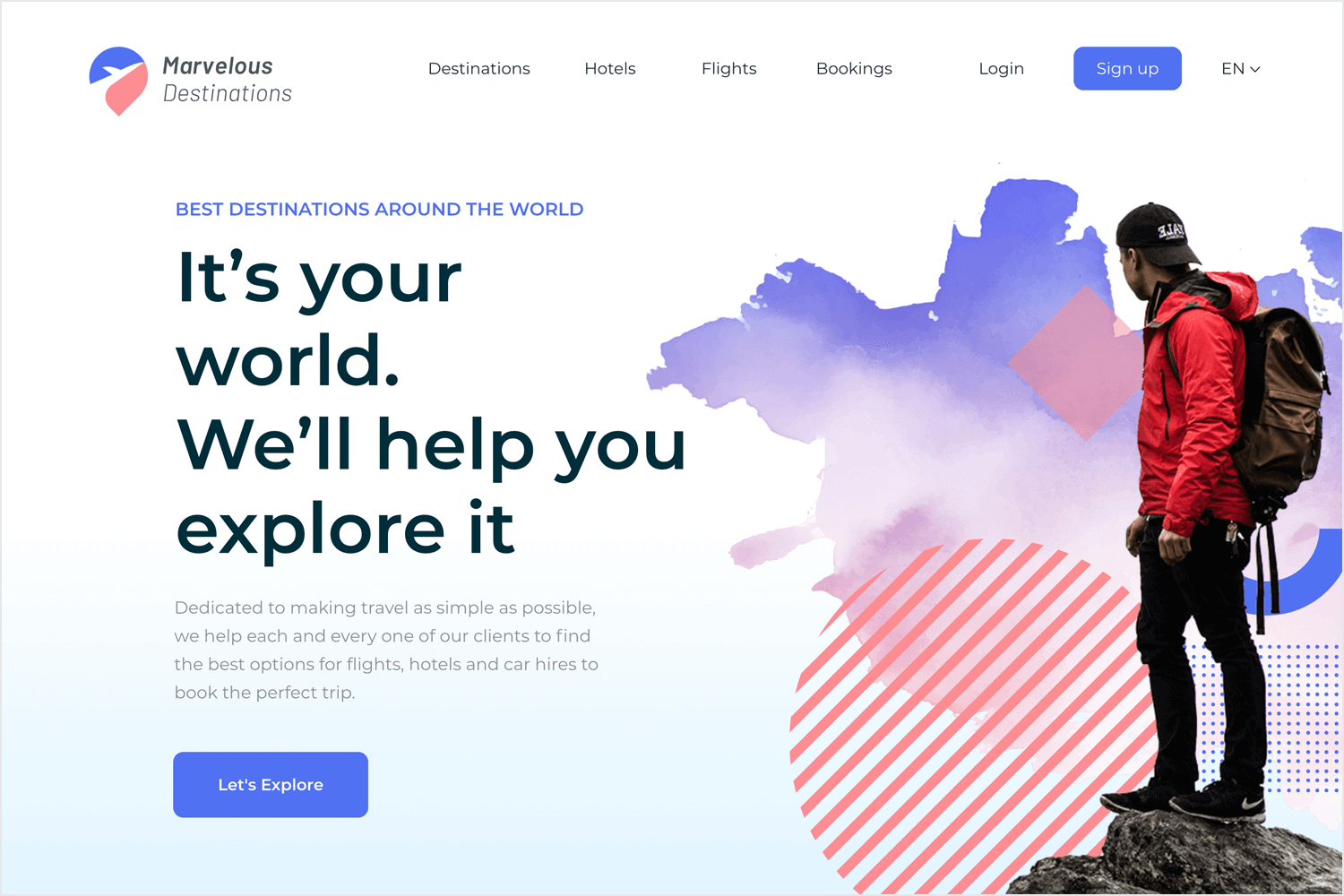The Future of Digital Marketing: Welcoming Modern Website Design Trends
Wiki Article
Understanding the Role of Responsive Design in Modern Website Development
In today's digital landscape, responsive style is no more a high-end yet a need in web site advancement. As customers gain access to sites from an array of devices, from large desktop computer keeps an eye on to pocket-sized mobile phones, making certain a regular and engaging customer experience is paramount. Responsive design achieves this by using scalable media and adaptable layouts, dealing with the nuanced demands of each gadget. The importance of receptive design prolongs beyond user experience-- it is likewise an important aspect in search engine optimization and ease of access. However just how specifically does it affect these locations, and what approaches ensure its efficient execution?Importance of Responsive Style
In today's digital landscape, the significance of receptive design in site advancement can not be overstated. Receptive style allows internet sites to immediately adjust their format and performance based on the display size and alignment of the gadget being used.In addition, responsive layout is vital for search engine optimization (SEARCH ENGINE OPTIMIZATION) Internet search engine like Google focus on mobile-friendly sites in their search results, indicating that a responsive style can significantly affect a site's exposure and position. This optimization not only boosts the user experience yet also drives organic website traffic and enhances the possibility for conversion and income generation.
In enhancement, responsive style supplies companies a cost-efficient service by getting rid of the demand for multiple variations of an internet site. By improving internet growth processes and decreasing upkeep initiatives, firms can assign sources extra efficiently, ultimately causing enhanced return on financial investment. Hence, responsive style is vital in today's competitive electronic atmosphere.
Crucial Element of Responsive Layout
To successfully carry out responsive design, it is vital to concentrate on several key elements that make certain optimum performance and customer experience across diverse devices. Among the fundamental components is the flexible grid design, which permits designers to develop fluid grids that automatically change to various screen sizes. This ensures that material maintains symmetry and readability, despite the device being made use of.
Furthermore, touch-friendly navigating is vital for responsive style. Implementing conveniently tappable buttons and instinctive motion controls boosts usability on touchscreen tools. Prioritizing performance optimization is likewise important, as it improves packing times and lowers bounce rates, particularly on mobile connect with variable rate.
Last but not least, using a mobile-first strategy makes sure that the style is at first optimized for smaller sized displays prior to broadening to accommodate desktops. This technique ensures that necessary performance and looks are protected throughout all platforms, ultimately enhancing the total individual experience.
Effect On User Interaction
Responsive design substantially affects user involvement by improving accessibility and contentment across numerous devices. By making sure that a website's design adapts seamlessly to different display sizes, responsive layout allows individuals to accessibility material easily, whether they are making use of a tablet computer, desktop, or mobile phone . This flexibility reduces the requirement for unneeded zooming or scrolling, giving a more positive and intuitive browsing experience. Because of this, individuals are most likely to remain on the site longer, explore extra pages, and connect with the content, all of which are essential signs of boosted involvement.Moreover, responsive style adds to quicker web page packing times, which is critical for preserving individual rate of interest. Users are a lot more inclined to abandon a website if it takes as well long to lots, particularly on mobile phones. By maximizing efficiency for varied platforms, receptive style minimizes filling delays, maintaining individuals engaged and lowering bounce rates.
Search Engine Optimization Perks of Responsive Design
While improving customer experience is a key objective, responsive style additionally plays an essential function in enhancing an internet site's search engine optimization (SEO) Receptive style makes sure that a site adapts to numerous display dimensions, getting rid of the demand for separate mobile and desktop versions.Furthermore, responsive style aids in faster page loading times, an essential consider SEO. Online search engine favor internet sites that load swiftly, identifying that customers are extra most likely to desert websites that take also lengthy to show. By utilizing receptive style, designers can improve and optimize images content, guaranteeing efficient loading and boosted search engine positions.
In addition, a natural URL structure throughout gadgets simplifies the indexing process for internet search engine, improving crawl efficiency. This uniformity in URLs strengthens a site's authority and trustworthiness, bring about boosted visibility in search results page. In summary, responsive design is not just a pattern however a basic part of search engine optimization technique, making sure internet sites are both straightforward and online search engine compatible.
Applying Responsive Design Methods
In the realm of contemporary internet growth, executing receptive design methods belongs to crafting a versatile canvas that readjusts seamlessly to various screen measurements. Central to this method is the use of adaptable grid-based designs, which utilize loved one systems like percentages as opposed to taken care of devices such you can check here as pixels. This guarantees that web content ranges appropriately throughout devices. Another essential technique includes utilizing media inquiries, which allow programmers to use various styles based upon the attributes of the gadget, such as resolution, size, and elevation.Responsive images and media are likewise important components. By look here utilizing methods like CSS media queries and the HTML 'image' component, developers can offer suitably sized photos based upon the individual's device, optimizing tons times and boosting user experience. Furthermore, the unification of liquid typography makes sure that message is understandable and cosmetically pleasing on any screen, accomplished via scalable units like 'rem' and 'em'.

Conclusion
Responsive design constitutes an important aspect of contemporary website development, significantly enhancing user experience throughout a series of tools. By including versatile designs, scalable images, and touch-friendly navigation, it boosts customer involvement and enhances site performance. Responsive style is critical for SEO, as it straightens with search engines' choice for mobile-friendly sites, therefore boosting exposure and organic web traffic. Eventually, implementing receptive style techniques ensures boosted access and usability, making websites extra efficient and user-centric.To efficiently apply responsive style, it is crucial to focus on a number of vital elements that guarantee optimum functionality and user experience across varied tools.Responsive design substantially affects user engagement by improving access and complete satisfaction across different tools. By ensuring that a site's design adapts effortlessly to various display dimensions, receptive layout allows users to access material effortlessly, whether they are utilizing a smart device, desktop computer, or tablet computer .While boosting individual experience is a main goal, responsive design also plays an important function in check my blog improving a website's search engine optimization (SEO)Receptive layout comprises a necessary element of contemporary site development, considerably enhancing customer experience throughout an array of devices.
Report this wiki page